The principles of leave no trace should be known and followed by anyone who spends time in the outdoors. They are basic conservation practices that help ensure that the wild places we love will stay wild for future generations. Being part of other conservation practices, such as hunting, habitat improvement, and even trail-maintenance crews are ways we can get involved with others in large-scale projects to help the environment flourish with our experiences.
However, many new to the outdoors need something more formal and structured to help understand how to interact to leave it better than we found it. Leave No Trace Principles can help us do precisely that. These rules allow for a conscious and concentrated exploration and adventure approach. There are seven leave no trace principles, and we will explore them together here and offer some practical tips for implementation.
What Are the Leave No Trace Principles?
Plan and Prepare
Travel and Camp on Durable Surfaces
Dispose of Waste Properly
Leave What You Find
Minimize Campfire Impact
Respect Wildlife
Be Considerate of Other Visitors
The 7 Leave No Trace Principles

Planning for a trip includes packing the right gear, such as a well-stocked first-aid kit. Jennifer Caudill
1) Plan and Prepare
In nature, unpredictability is a constant. Proper planning ensures personal safety and protects the environment from unintended damage. It would be best to equip yourself with knowledge about the areas you will be visiting. This includes the terrain, weather patterns, local regulations, and potential hazards. Some common hazards are wildlife, toxic plants, and interactions with the local population. Do a risk assessment of everything that could go wrong and devise solutions for those problems.
Items to help with this include a first-aid kit (check our our reviews of the best first-aid kits
), suitable clothing for the expected weather, sufficient water and food, or the ability to procure those sustainably on your trip. Bring the best camping gear
you have on your trip. And, if you can schedule it, go during off-peak times to help reduce human impact on popular sites. It makes for a more quiet and enjoyable experience.
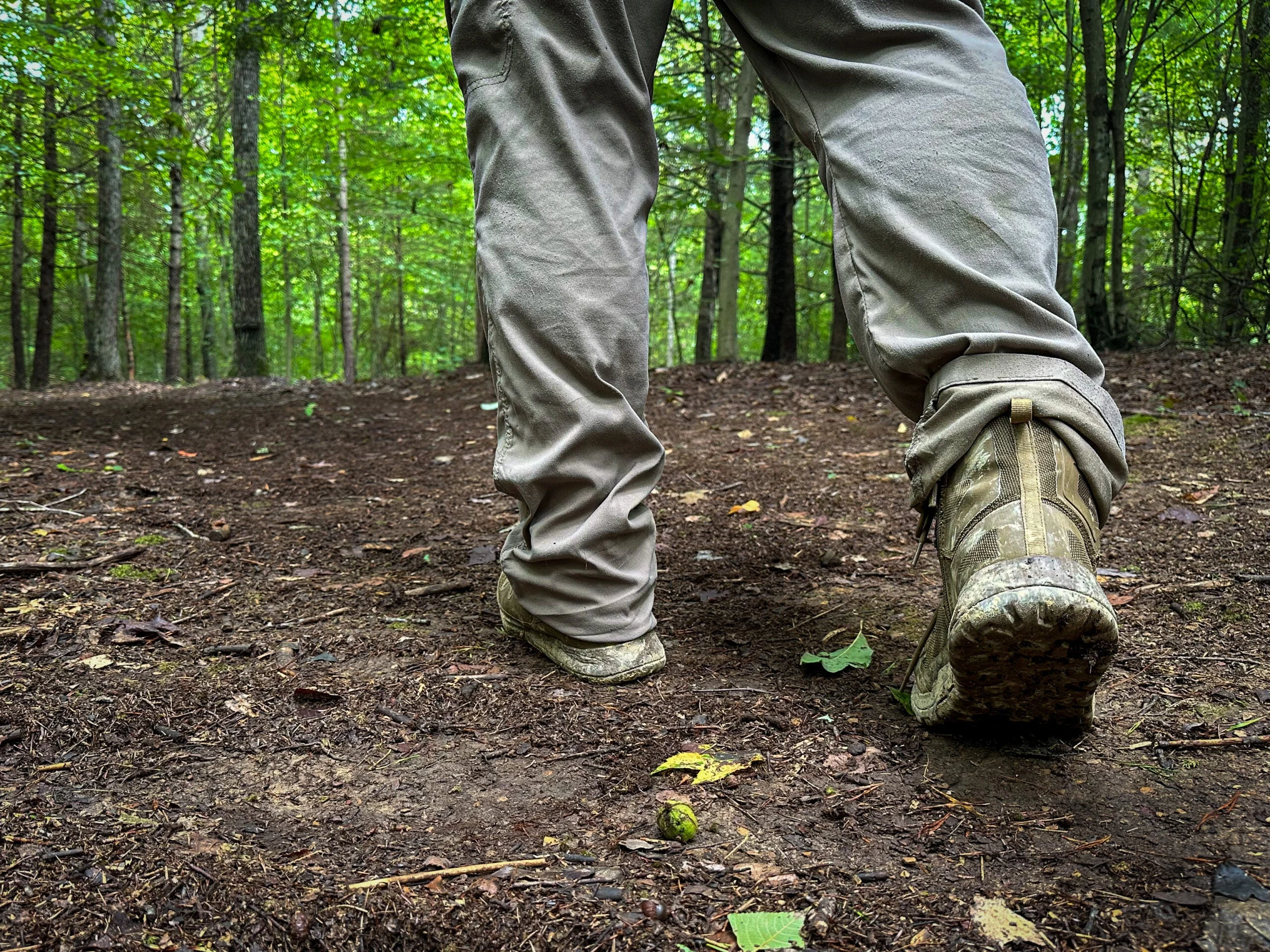
Stick to designated trails on hiking or backpacking trips. Jennifer Caudill
2) Travel and Camp on Durable Surfaces
Every step we take has potential consequences. I like to think of it from a tracker’s perspective because I do a lot of tracking. I don’t leave any sign or tracks for people to follow me. My time in the woods is my time.
Durable surfaces are nature’s designated trails designed to handle the weight of our adventures, which why this rule is included in the list of leave no trace principles. The more time we spend on regular trails, the less likely we will impact our surroundings negatively. If you can read a map and know how to read a compass
, or know the trail in more specifics, it is easy to shortcut on switchbacks. There is a lot of science that goes into building trails. Cutting through on switchbacks allows for unnecessary erosion, which could lead to long-term trail decline.
As for camping, use officially designated campsites when they are available. They are strategically placed to minimize overall impact. If traveling to the backcountry without designated sites, camp 200 feet away from water sources. Some natural resources are incredibly hardy, others fragile. Water is one of those. It does not take much camping interaction or crossing to affect the ecosystems in them negatively.
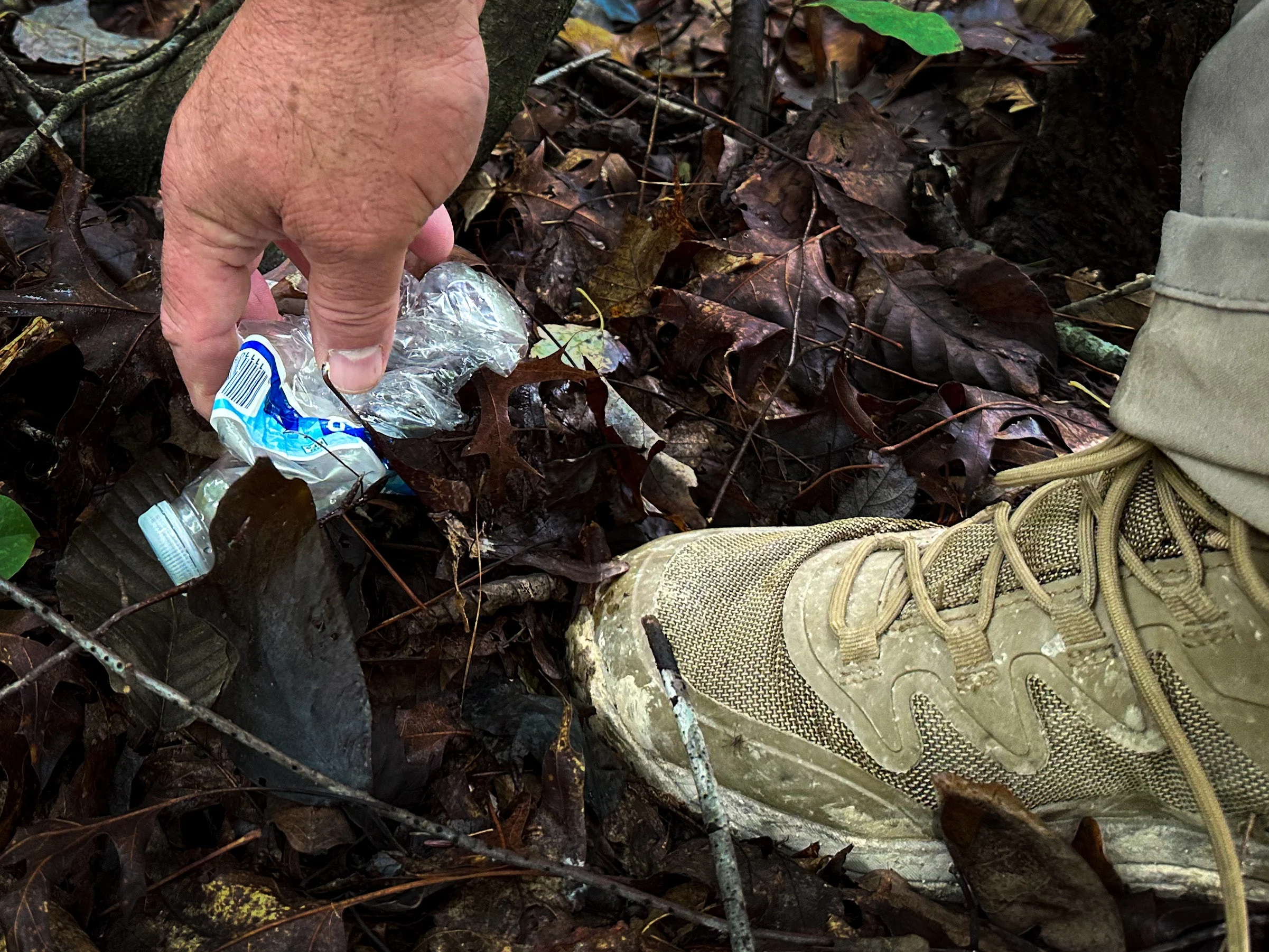
If you see trash in the woods, pick it up. Jennifer Caudill
3) Dispose of Waste Properly
This leave no trace principle should be pretty self-explanatory: There is no sound reason why we cannot pack out what we pack into the outdoors. From small items to large items, bring them out with you. I typically take a small bag with me and pick up 2-3 items that others have left behind. Again, doing what I can to leave a place better than I found it.
As for human waste, nothing is more aggravating than finding a used campsite with small piles of feces and toilet paper. You can take a shovel, trowel, or stick to dig a hole 6-8 inches deep (commonly called a cat hole) to place human waste in. Our waste has long-term ramifications for the environment. Proper disposal safeguards ecosystems and maintains nature’s aesthetic appeal. In addition, make sure you defecate and urinate at least 200 feet away from waterways and trails. This ensures clean water and less likelihood that others will come across it.
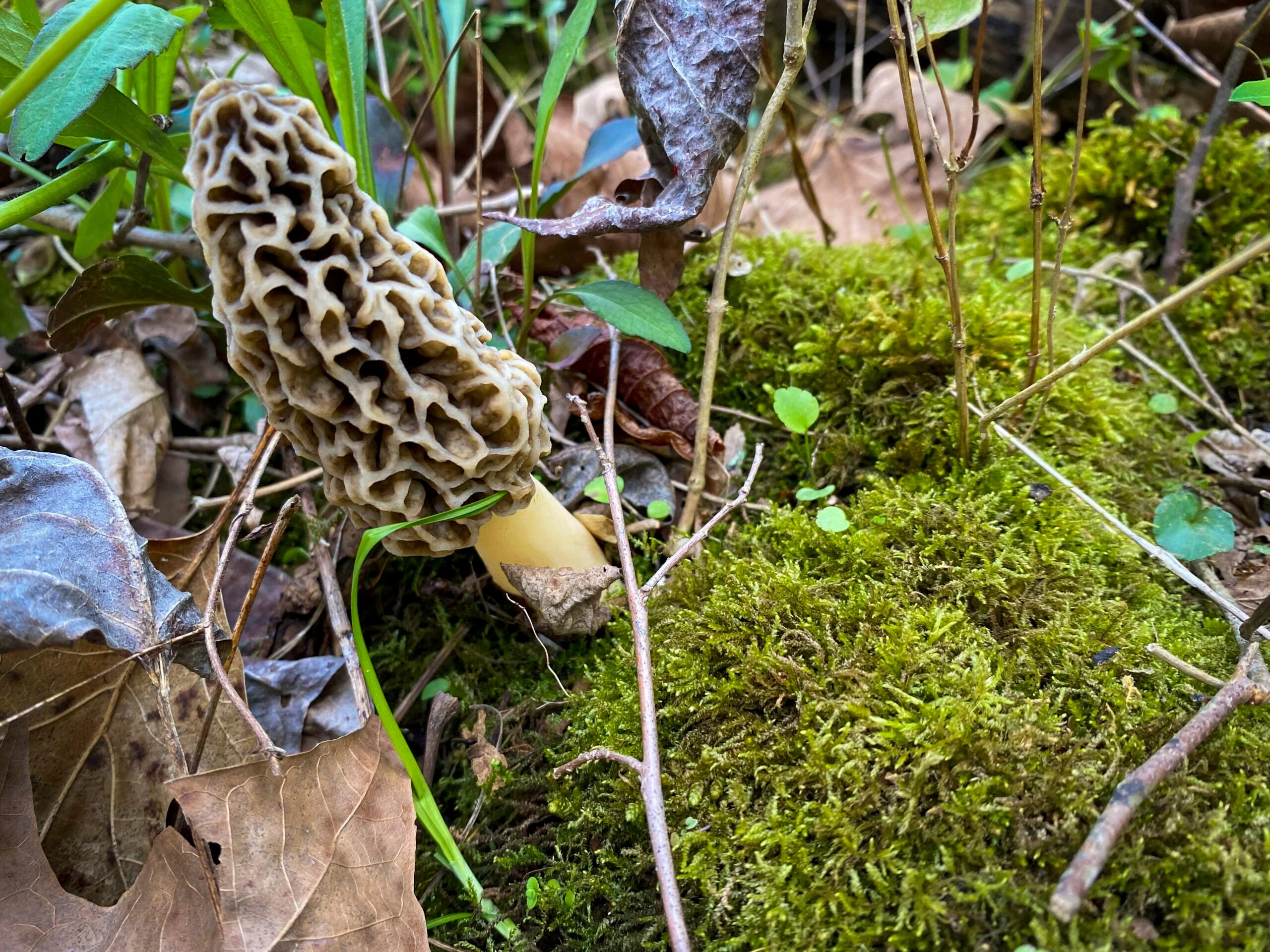
When foraging, consider practicing the 10:1 rule: Leave 10 for every 1 that you take. Jennifer Caudill
4) Leave What You Find
This leave no trace principle may sound corny, but I like it: “Take only memories and leave only tracks.” That does not mean that we will not use natural resources while we are outdoors. Flowers and cool stones should be left in place for others to enjoy. If you use resources for foraging or hunting, I like the 10:1 rule: Ensure there are 10 of anything you take, and take only one as long as it is legal.
We can also engage in a significant amount of resource and habitat improvement throughout the year at the location where you use resources. This means you leave it with a net positive effect rather than a negative one. Near where I live, archeologists discovered some human remains in a pouch with unexpected resources about 10 years ago. The remains were estimated to be a few thousand years old. It turned out that the previously understood history of that location was turned upside down. I share that because we should also leave historical and cultural sites alone. They hold stories of the past that are important. This allows scientists to study them and learn about how we got here.
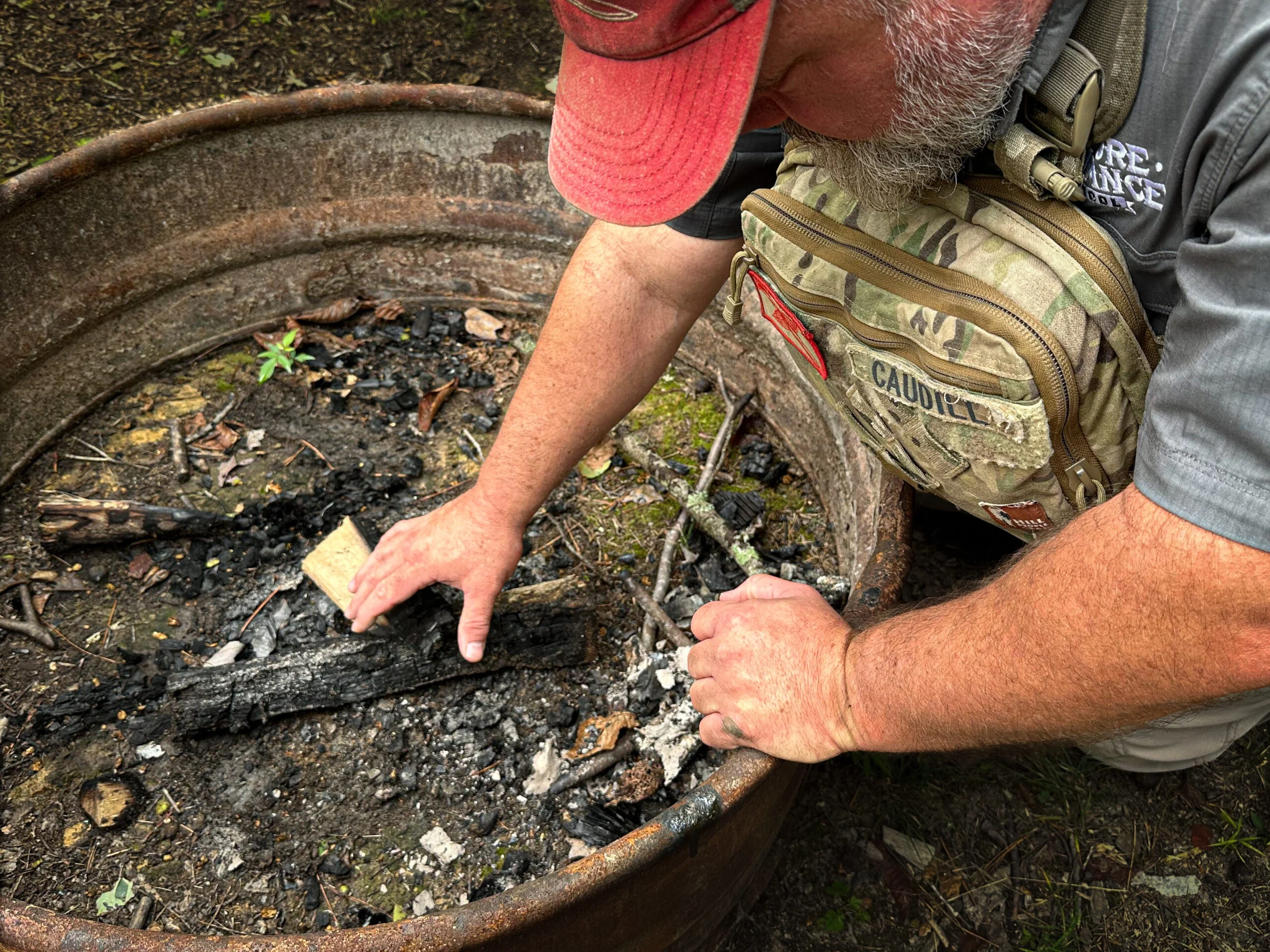
Make sure your fire is completely out before you leave your campsite. Jennifer Caudill
5) Minimize Campfire Impact
Most folks who spend time outdoors love a good campfire. (Follow these tips to learn the basics of how to start a fire
.) the They are synonymous with great outdoor memories. However, they can leave lasting impacts if not managed responsibly. There are two good options to ensure we leave it better than we found. The first is not to build a fire at all. With modern technology, you can use a small camp stove for cooking and battery-powered headlamps or lanterns to light the camp area. Secondly, when you want a fire follow general recommendations to leave less impact. Use established fire rings so there are not multiple areas where the ground is cleared and burned.
When building a fire, use small sticks and twigs rather than large logs that create more heat than is needed. This also makes it easier to ensure the fire is out when you are done. Unleashed fires that get out of hand in a forest are incredibly damaging. A fire ring should be cold before you leave. If you are uncomfortable touching the fire debris due to heat, you should not feel comfortable leaving. Smoke or steam coming off a fire area you have “put out” is still possible for a fire to start on its own with just a little wind.
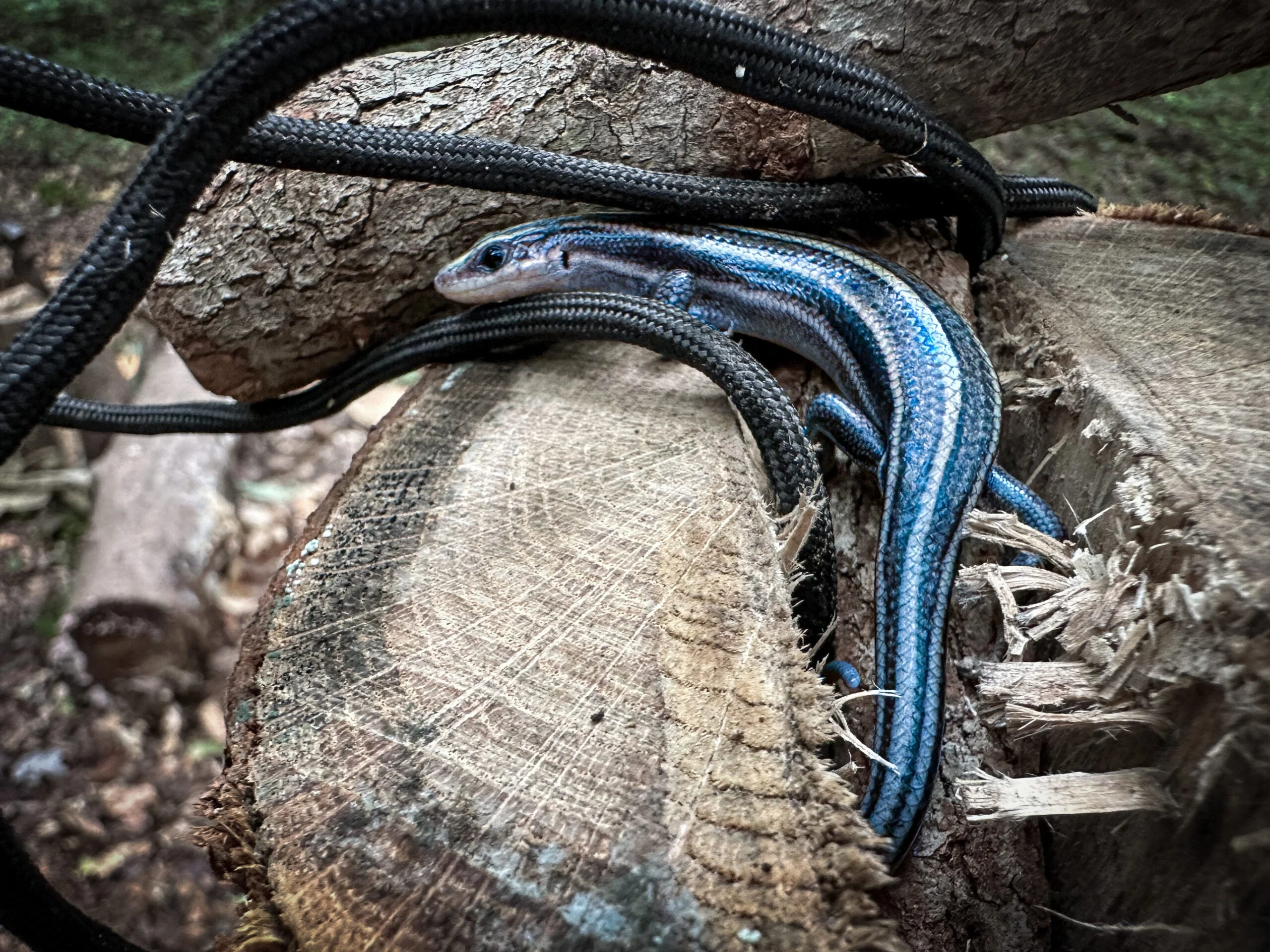
You can admire wildlife without disturbing it. Jennifer Caudill
6) Respect Wildlife
I have had bobcats cross over my legs while sitting on the ground, squirrels get in my pockets while in a deer stand, and a rabbit sleep under a tarp shelter one night on a stormy trip. Encounters with wildlife can be among the most memorable outdoor experiences. Such encounters, however, should not alter their natural behavior—which is what this leave no trace principle is all about
When it is our choice, we should maintain a safe distance. It’s crucial for their safety and yours. Always use binoculars or a camera with a good zoom to get a closer look. Stay calm and non-aggressive if they happen to come close and surprise you. Don’t allow wildlife to become accustomed to human food. Wild animals accustomed to our food are problematic. It does not serve them well as it teaches them to lose some of their instinctual behavior. It also allows the disease to pass on to other animals more efficiently.
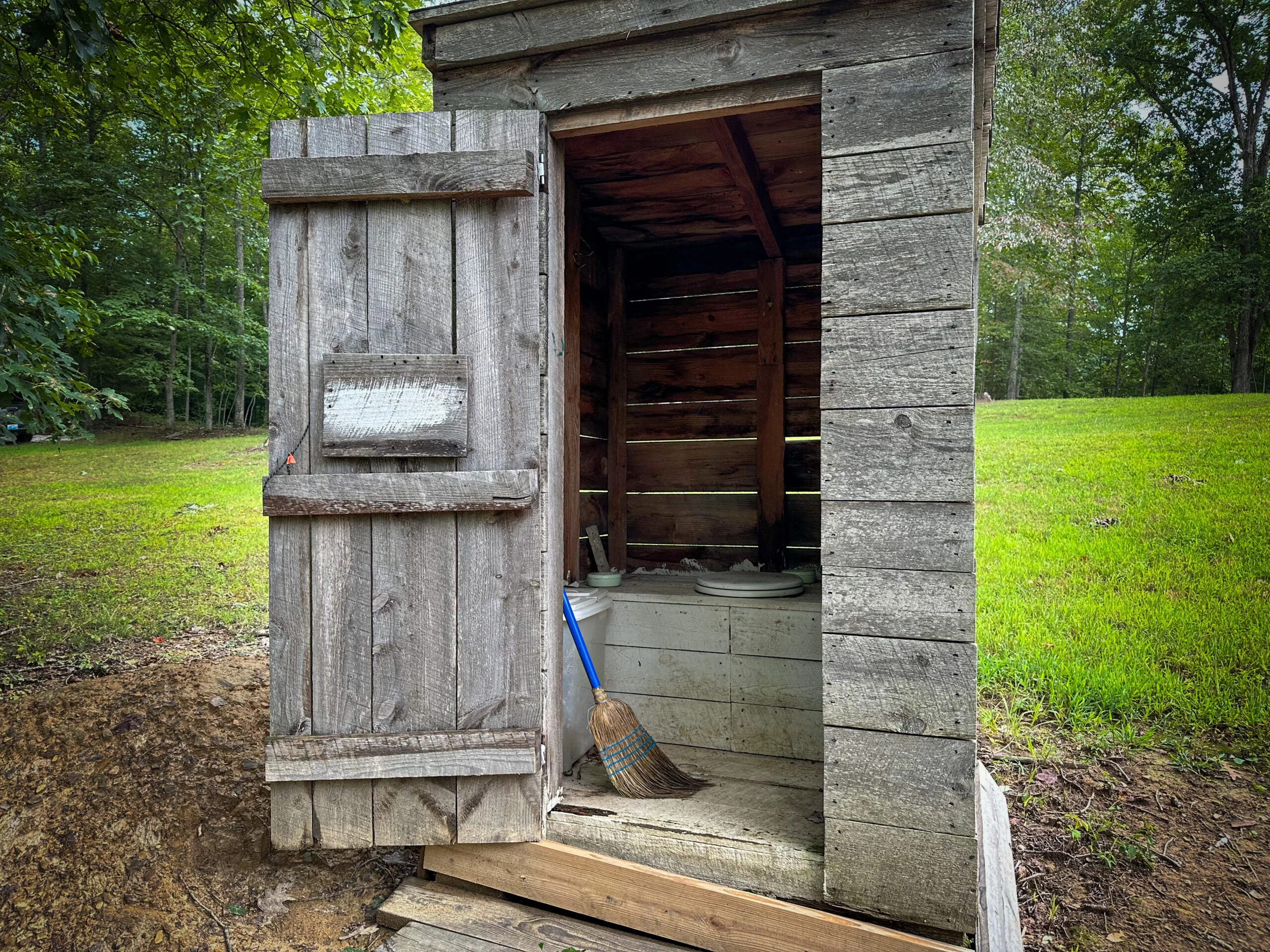
After you take care of your business, clean it up before others arrive. Jennifer Caudill
7) Be Considerate of Other Visitors
The final leave no trace principle reminds us that the outdoors are a shared space. It is an experience rooted in mutual respect and understanding, or at least it should be. Everyone has their individual choices in music. Additionally, most don’t want to hear music at all in general outdoors. Respect everyone’s right to get away from the noise and distractions. Keep the noise levels in check so those around us can enjoy the natural sounds. Trail manners and etiquette are other things to be aware of. Yielding the trail to those going uphill or to larger groups ensures a smoother experience for everyone.
Final Thoughts on Leave No Trace Principles
The leave no trace principles
are more than mere guidelines; they signify a profound respect for nature. By embracing these principles, we recognize our transient status in these spaces and the duty we must leave untouched for those who come after us. In the eloquent words of John Muir, “In every walk with nature, one receives far more than he seeks.” The LNT principles are our humble offering back to nature for the boundless inspiration, healing, and joy it brings us.






